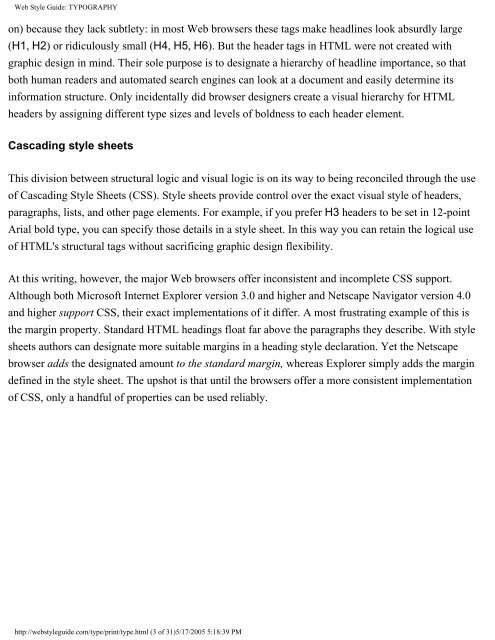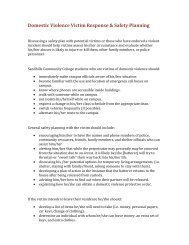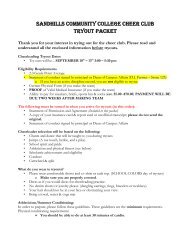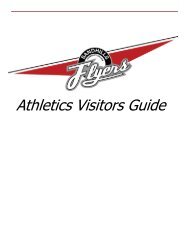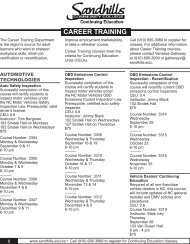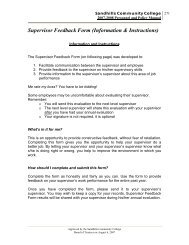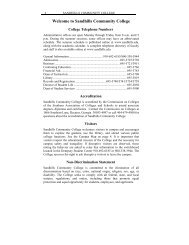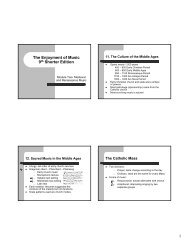Web Style Guide: TYPOGRAPHY - Sandhills Community College
Web Style Guide: TYPOGRAPHY - Sandhills Community College
Web Style Guide: TYPOGRAPHY - Sandhills Community College
Create successful ePaper yourself
Turn your PDF publications into a flip-book with our unique Google optimized e-Paper software.
<strong>Web</strong> <strong>Style</strong> <strong>Guide</strong>: <strong>TYPOGRAPHY</strong><br />
on) because they lack subtlety: in most <strong>Web</strong> browsers these tags make headlines look absurdly large<br />
(H1, H2) or ridiculously small (H4, H5, H6). But the header tags in HTML were not created with<br />
graphic design in mind. Their sole purpose is to designate a hierarchy of headline importance, so that<br />
both human readers and automated search engines can look at a document and easily determine its<br />
information structure. Only incidentally did browser designers create a visual hierarchy for HTML<br />
headers by assigning different type sizes and levels of boldness to each header element.<br />
Cascading style sheets<br />
This division between structural logic and visual logic is on its way to being reconciled through the use<br />
of Cascading <strong>Style</strong> Sheets (CSS). <strong>Style</strong> sheets provide control over the exact visual style of headers,<br />
paragraphs, lists, and other page elements. For example, if you prefer H3 headers to be set in 12-point<br />
Arial bold type, you can specify those details in a style sheet. In this way you can retain the logical use<br />
of HTML's structural tags without sacrificing graphic design flexibility.<br />
At this writing, however, the major <strong>Web</strong> browsers offer inconsistent and incomplete CSS support.<br />
Although both Microsoft Internet Explorer version 3.0 and higher and Netscape Navigator version 4.0<br />
and higher support CSS, their exact implementations of it differ. A most frustrating example of this is<br />
the margin property. Standard HTML headings float far above the paragraphs they describe. With style<br />
sheets authors can designate more suitable margins in a heading style declaration. Yet the Netscape<br />
browser adds the designated amount to the standard margin, whereas Explorer simply adds the margin<br />
defined in the style sheet. The upshot is that until the browsers offer a more consistent implementation<br />
of CSS, only a handful of properties can be used reliably.<br />
http://webstyleguide.com/type/print/type.html (3 of 31)5/17/2005 5:18:39 PM


